What is ShadowSense™
Baanto ShadowSense touch technology is an innovative and patented optical position sensing technology. ShadowSense designs use high performance sensors operating in the analog domain to provide unprecedented performance, stability, and accuracy.
The best analogy for ShadowSense technology lies in the 6,000 year old sundial. The shadow cast by a sundial instantly and accurately responds to the position of a light source without the use of lenses, with an infinite depth of field, and without the need for exposure control. ShadowSense technology exploits the same characteristics for touch applications, resulting in one of the highest performance, most robust optical sensing solutions available.
What is a Shadow Sensor?
A ShadowSensor is a patented sensor that is capable of detecting the angle of a ray of light based on the shadow cast on the sensor. The sensor itself consists of a couple of light-detecting pixels and a mechanical roof that covers half of one of the pixels. Click on the video for a more detailed explanation.
ShadowSense™ Architecture
A typical configuration of a ShadowSense touchscreen utilizes six (6) sensors on the top bar; one in each corner and two mid-span. For illumination, 940 nm IR LEDs are deployed on both sides and the bottom of frame.

ShadowSense™ Performance
ShadowSense touch is based upon the precise and accurate detection of an object’s shadow as it enters, hovers within, or transitions out of a sensor’s field of view. The object’s position in the touch plane is then calculated based upon the ratio of a fully illuminated condition to the shadowed state for multiple light sources and multiple sensors.
When a finger or an object touches the screen, multiple shadows are cast out at different angles. Each one of the ShadowSensors calculates the angle of the shadow that falls upon it. The on-board processor calculates the interference pattern of the shadows detected by the various sensors. Simply, the interference pattern is where multiple shadows converge together and best describe the touch location. When the shadows converge, the intersection of the shadows also describe the size and shape of the object.
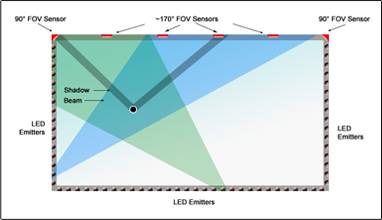
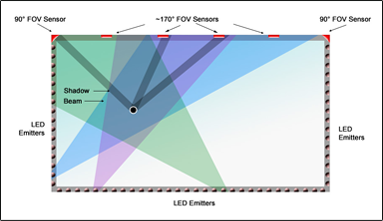
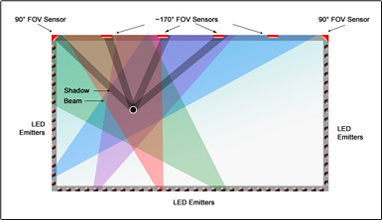
Curious how Baanto ShadowSense™ can help you?
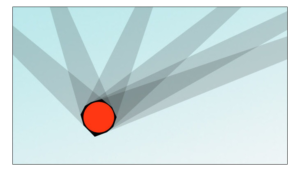
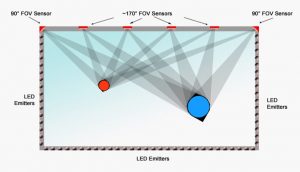
Object Detection & Multi-touch
When an object touches the optical plane, it casts several shadows that are detected by each sensor. The intersection of the shadows creates an area approximated by a circle that represents the size and shape of the touch object. This allows ShadowSense to differentiate between a finger, a stylus, an eraser, or any other object.
In a 6 sensor configuration, a touch point is detected when all 6 shadows intersect with each other. The intersection of any fewer shadows will not yield a valid touch. If there are multiple touch objects then there will be multiple areas where all 6 shadows intersect with each other, allowing ShadowSense to track each one individually.
Transparency Detection
ShadowSense™ has the unique ability to detect the transparency of an object, allowing it to ignore screen contaminants such as rain, grease or other fluids. The transparency of an object is determined by the density of the shadow that is detected by the sensors. The shadow cast by a solid object will be darker than that of a transparent object. Using Dashboard, ShadowSense can be configured to ignore transparent touch objects to provide a better user experience.
